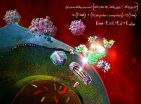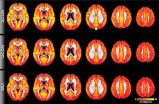(Press-News.org) In a ground-breaking research project at the University of Gothenburg, seven Swedish women have had embryos reintroduced after receiving wombs from living donors. Now the first transplanted woman has delivered a baby – a healthy and normally developed boy. The world-unique birth was acknowledged in The Lancet on 5 October.
The uterus transplantation research project at the University of Gothenburg started in 1999 and has been evaluated in over 40 scientific articles. The goal of the Gothenburg project is to enable women who were born without a womb or who have lost their wombs in cancer surgery to give birth to their own children.
Live donors
Nine women in the project have received a womb from live donors – in most cases the recipient's mother but also other family members and close friends. The transplanted uterus was removed in two cases, in one case due to a serious infection and in the other due to blood clots in the transplanted blood vessels.
The seven remaining women have in 2014 tried to become pregnant through a process where their own embryos, produced through IVF, are reintroduced to the transplanted uterus.
First child from a transplanted uterus
The first early pregnancy was confirmed in the spring after a successful first pregnancy attempt in a woman in her mid-30s, a little over a year after her transplantation.
In early September, the woman successfully delivered a baby by caesarean section, making her the first woman in the world to deliver a child from a transplanted uterus. Her uterus was donated by a 61-year-old unrelated woman.
The caesarean section had to be performed earlier than planned: the woman developed preeclampsia in week 32 of her pregnancy and the CTG indicated that the baby was under stress. A caesarean section was performed in accordance with normal clinical routines so as not to risk the health of the mother and child.
Developing normally
According to Professor Mats Brännström, who performed the caesarean section, the perfectly healthy newborn boy is developing normally. The baby weighed 1,775 grams (3 lbs 14.6 oz) at birth, which is normal size considering the gestational age at delivery.
'The baby screamed right away and has not required any other care than normal clinical observation at the neonatal unit. The mother and child are both doing well and have returned home. The new parents are of course very happy and thankful,' says Professor Mats Brännström, who is leading the research project.
'The reason for the woman's preeclampsia is unknown, but it may be due to her immunosuppressive treatment combined with the fact that she is missing one kidney. The age of the donated womb may also be a factor. Also, preeclampsia is generally more common among women who have become pregnant through IVF treatment.'
Mild rejection episodes
The woman has had three mild rejection episodes since the transplant, one of which occurred during the pregnancy. The rejection episodes, which are often seen also in other types of transplants, could be stopped with immunosuppressive treatment.
Followed closely
The research team followed the pregnancy closely, carefully monitoring the growth and development of the foetus with a special focus on the blood supply to the uterus and umbilical cord.
'There were concerns that the blood supply may be compromised since we had reattached the blood vessels to the womb. But we did not notice anything unusual concerning the function of the uterus and the foetus, and the pregnancy followed all normal curves,' says Brännström.
Major step
The successful delivery is considered a major step forward.
'It gives us scientific evidence that the concept of uterus transplantation can be used to treat uterine factor infertility, which up to now has remained the last untreatable form of female infertility. It also shows that transplants with a live donor are possible, including if the donor is past menopause,' says Brännström.
Several research teams around the world have been awaiting the results of the Gothenburg study in order to launch similar observational studies. The pregnancy attempts are ongoing with the other six women in the project.
INFORMATION:
Watch the research team talk about the succesful birth: https://www.youtube.com/watch?v=kujArjUSt5A&list=PLF9EB8295A10334D9
Link to journal: http://www.thelancet.com/
Contact:
Mats Brännström, Professor of Obstetrics and Gynaecology at the University of Gothenburg and Chief Physician at the Sahlgrenska University Hospital
mats.brannstrom@obgyn.gu.se
ABOUT THE UTERUS TRANSPLANTATION RESEARCH PROJECT
The uterus transplantation research project at the University of Gothenburg is the world's first systematic and scientifically based study aimed to find a treatment for women suffering from uterine factor infertility.
The researchers in the project are carefully monitoring several medical, psychological and quality of life-related parameters.
Uterine infertility, which affects over 200,000 European women, is the only form of female infertility that until now has lacked effective treatment.
Two previous experiments with uterine transplants have been performed, in Saudi Arabia in 2000 and in Turkey in 2011. In the first case, the womb from a living donor, had to be removed shortly after the transplant. In the second case, the donor was a brain-dead heart beating young woman. In 2013, the research team in Turkey reported several attempts to reintroduce embryos and two very early pregnancies that ended in miscarriage.
The research project in Gothenburg is funded by grants from a private research foundation, the Jane and Dan Olsson Foundation.
To explore any possible limits of the two theories, they have been experimentally verified many times already and both have passed all the tests so far. Hence, scientists look for deviations in experiments with increasing precision or under extreme conditions.
For this purpose, Nörtershäuser's team has now accelerated ions to velocities near the speed of light and illuminated them with a laser.
The results, which are presented in two new publications, confirm the time dilation predicted for high velocities in the theory of relativity with an accuracy that ...
Deerfield, Ill. (October 8, 2014) — The annual number of dengue fever cases in India is 282 times higher than officially reported, and the disease inflicts an economic burden on the country of at least US$1.11 billion each year in medical and other expenses, according to a new study published online today in the American Journal of Tropical Medicine & Hygiene.
The study, led by researchers at Brandeis University's Schneider Institute for Health Policy in Waltham, Massachusetts, the INCLEN Trust International in New Delhi, and the Indian Council of Medical Research's ...
The battle against AIDS cannot be won in the laboratory alone. To fight the potentially deadly virus that 34 million people are suffering from we need help from computers. Now research fron University of Southern Denmark turns computers into powerful allies in the battle.
Effective treatment of HIV-virus is a race against time: Many of the drugs that have been potent killers of HIV-virus, have today lost their power, because the virus has become resistant to them. As a result science must constantly develop new drugs that can attack the virus in new ways.
Now researchers ...
Scientists at The University of Texas Health Science Center at Houston (UTHealth), Monash University and RIKEN Centre for Developmental Biology have used a combination of small molecules to generate mouse cells that can form bone and cartilage. This new method is easily scalable, and hence is a promising approach for the repair of human bone and cartilage defects. The research has just been published at http://dev.biologists.org/ in the scientific journal Development.
Current strategies to regenerate bone and cartilage use adult stem cells that are committed to forming ...
Boston, MA – The main function of the immune system is to protect against diseases and infections. For unknown reasons our immune system attacks healthy cells, tissues and organs in a process called autoimmunity, which can result in diseases such as multiple sclerosis, type 1 diabetes, lupus or rheumatoid arthritis. There are currently no existing cures for these diseases.
Now, in a new study by researchers at Brigham and Women's Hospital (BWH), a potential treatment maybe on the horizon. Researchers found that NAD+, a natural molecule found in living cells, plants ...
Boston, MA — A new, large-scale study has identified six new genetic variants associated with habitual coffee drinking. The genome-wide meta-analysis, led by Harvard School of Public Health and Brigham and Women's Hospital researchers, helps explain why a given amount of coffee or caffeine has different effects on different people and provides a genetic basis for future research exploring the links between coffee and health.
"Coffee and caffeine have been linked to beneficial and adverse health effects. Our findings may allow us to identify subgroups of people most ...
OAK BROOK, Ill. – A magnetic resonance imaging (MRI) technique can detect signs of cognitive decline in the brain even before symptoms appear, according to a new study published online in the journal Radiology. The technique has the potential to serve as a biomarker in very early diagnosis of preclinical dementia.
The World Health Organization estimates that dementia affects more than 35 million people worldwide, a number expected to more than double by 2030. Problems in the brain related to dementia, such as reduced blood flow, might be present for years but are ...
A new model for stroke care is being studied in rural Alberta to reduce inequities in health across communities. This model, presented at the Canadian Stroke Congress, shows how hospitals in rural areas can mimic the type of care that's often only available in larger centres.
In geographically diverse Canada, stroke care can seem like tale of two cities – or more like a city and a small town. The ideal is stroke unit care, where a multidisciplinary staff of doctors, nurses and therapists collaborate on treatment and the road to recovery. In Alberta, that type of ...
People who have had a stroke or transient ischemic attack (TIA or mini-stroke) are at high risk for a second similar event or other serious medical problems for at least five years and need better follow up and strategies to prevent these problems, according to data presented at the Canadian Stroke Congress.
At present, most stroke or TIA patients in Canada are followed closely by specialty clinics for about 90 days after an event, during the period they are considered at highest risk for a repeat event. If no such incident occurs during that period, they are often transferred ...
WASHINGTON, DC – October 7, 2014 -- Yogurt containing probiotic bacteria successfully protected children and pregnant women against heavy metal exposure in a recent study. Working with funding from the Bill and Melinda Gates Foundation, Canadian and Tanzanian researchers created and distributed a special yogurt containing Lactobacillus rhamnosus bacteria and observed the outcomes against a control group. The work is published this week in mBio, the online open-access journal of the American Society for Microbiology.
A research team from the Canadian Centre for Human ...


